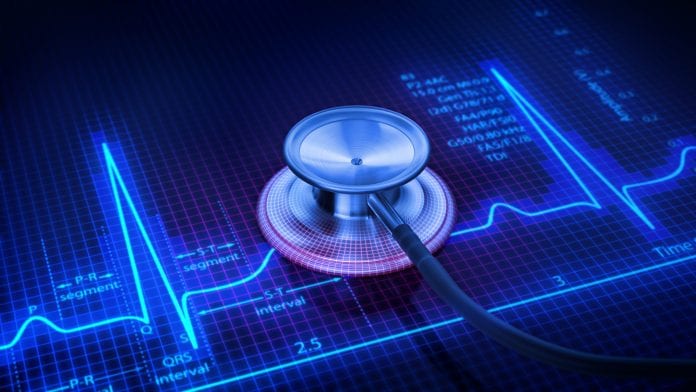
Anne Sheehan, Business Director at Vodafone UK discusses how it is helping the healthcare sector in its digital transformation.
COVID-19 has presented many challenges for organisations across all industries, but the strain the pandemic has put on the NHS is like nothing we’ve seen before. Technology is playing a vital role in assisting the NHS as it looks to keep hospitals running and providing the standard of care we all expect.
The digital transformation journey the NHS has undergone throughout the pandemic has been impressive. Vodafone worked closely with the NHS to double the capacity of calls to its 111 telephone advice service, which experienced a 400% surge in calls during the initial outbreak of the virus, when compared to the pre-pandemic peak. We also increased the 4G network capacity at the temporary Nightingale hospitals, which enabled staff and patients to stay in touch with loved ones.
It is clear that COVID-19 will continue to challenge the NHS in 2021, but the good news is the healthcare sector is taking notice and accelerating digital transformation across the board. It’s also great to see healthcare organisations embracing key emerging technologies, such as IoT (Internet of Things) and 5G, which present exciting possibilities for the NHS and patients alike.
Public support
A recent report from Vodafone which looked at the vital role 5G and IoT technology can play in transforming health and social care, found that innovation across the NHS is supported and encouraged by the public. The report titled “Better Health, Connected Health – How 5G and IoT Technology Can Transform Health and Social Care”, found that more than three quarters (70%) of respondents believe that the Government should invest in digital technology for the NHS.
The research also found that the adoption of emerging technologies is highly valued by the public, with 80% of respondents saying they would like to see 5G connected ambulances, and 60% believing that video appointments are more convenient than visiting a GP surgery or hospital in person. 57% supported the use of video consultations once the COVID-19 pandemic is over.
The importance of 5G in healthcare
As 5G is increasingly adopted throughout the UK and other industries, we are starting to see the tangible benefits the technology can provide. Further investment in 5G by the Government would open countless possibilities for the NHS.
The use of 5G connected ambulances is one example. Paramedics who are tending to a patient in an ambulance are connected to a hospital using high-resolution video. They also have access to tools displaying the patient’s medical records, and live clinical data such as heart rate monitoring. This enables clinicians based at the hospital to examine the patient remotely, assess their symptoms, perform initial diagnoses and prescribe any urgent treatment. With access to clear, visual data, in real-time, paramedics are able to give initial treatment before they have even arrived at the hospital, saving both time and lives.
5G’s high capacity and low latency benefits can also be of benefit inside a hospital. Clinicians can make use of other technologies such as Augmented Reality (AR) to provide remote expert advice on surgery without needing to be in the same operating theatre, or even the same country. Using AR video feeds, a surgeon’s hands can be superimposed onto the patient to give guidance during the operation, even overlaying sketches and anatomical diagrams for reference.
Role of IoT in healthcare
IoT is an exciting area which has the potential to transform the way hospitals currently work, communicate and operate, both for patient interaction and behind the scenes.
IoT can be used to monitor drug inventory levels for example, managing resources and capacity, as well as helping to locate equipment quickly in an emergency. Poor medical adherence is also an area where IoT can help, providing doctors and carers with an accurate measure of whether patients are correctly following their treatment schedules, as well as directly involving the patient to manage their own health.
IoT can also help with energy saving – monitoring how hospital spaces are occupied and ensure energy is only used where it is needed. Smart heating and ventilation systems will be able to determine whether a space Is occupied and therefore whether it needs to be cooled or heated, and when paired with motion sensors and smart lighting, IoT can guarantee that only occupied spaces are lit and at the correct levels. Taking it one step further, smart buildings can learn occupancy patterns and suggest how they can be optimised for both the staff’s comfort and energy efficiency. In hospitals, this would make a huge difference to how the buildings are used and how much is being spent, as well as helping to cut greenhouse gas emissions.
The call for investment
But for this to all happen, the Government needs to invest in the NHS’ future. The 40 new hospitals already committed to be built by 2030 should be designed to incorporate the very latest digital technology, such as 5G and IoT. By making the right investment decisions today – the report calls for an investment of £1.5bn – the Government will be able to bring 5G to every hospital across the country and encourage the creation of 5G healthcare applications through regional innovation centres. This will help the UK to become a global leader in the future of healthcare.
Only with this type of continued investment will we see our hospitals be properly protected to meet the many challenges of the future, moving with the times to create a digital-first approach that will benefit both patients, staff, and taxpayers.
Anne Sheehan,
Guest Author
Business Director
Vodafone UK
























